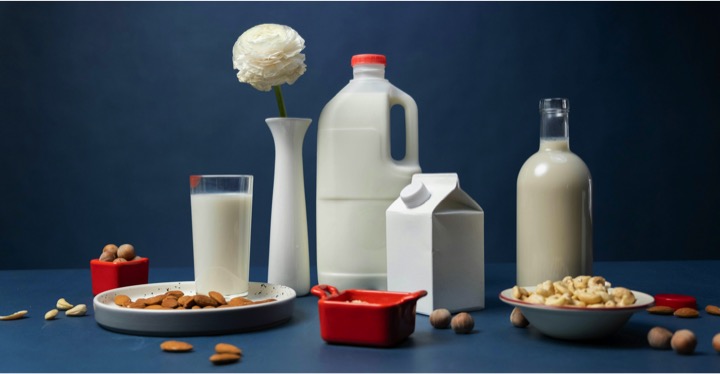India which is producing 231 million tonnes of milk annually is the largest milk producer in the world, contributing approximately one-fourth of global production. Through cooperatives, millions of small and marginal farmers have been united, creating a network of over 1.7 lakh dairy cooperative societies in the country and establishing massive plants with a processing capacity of 100 million liters of milk per day.
This historic success is the result of seven decades of relentless hard work and efforts by cooperative institutions across the country. In India, dairy is not limited to milk production; it serves as a livelihood source for over 80 million families, empowers women, provides nutrition and financial security, and acts as a key driver of inclusive rural development.
The establishment of a separate and dedicated Ministry of Fisheries, Animal Husbandry, and Dairying in 2019, followed by the formation of the Ministry of Cooperation in 2021, reflects the Government of India’s faith in the cooperative model and its potential to bring prosperity to the nation. This has advanced the vision of “Sehkar Se Samridhi” strengthening the cooperative movement in the country. Within a short span of three years, the ministry has initiated several significant measures for the holistic and inclusive development of the entire cooperative sector.
Dairy Cooperatives in India India has over 8 lakh cooperative societies operating across 29 different sectors, serving nearly 29 crore members. Among these, agriculture-related cooperatives, such as Primary Agricultural Credit Societies (PACS), dairy, and fisheries cooperatives, play a crucial role in providing rural communities with access to markets, credit, and technical services. These cooperatives facilitate the procurement of inputs and the marketing of products, ensuring that farmers get fair prices in the marketplace.
Today, India’s dairy cooperative network comprises 23 state-level marketing federations and apex organizations, 268 district milk unions, and over 1.44 lakh active village-level societies with approximately 1.72 crore members. This network collects around 660 lakh kilograms of milk daily and sells 440 lakh liters of milk per day.
In dairy cooperatives, nearly 70% of the workforce in the dairy sector is comprised of women. These cooperatives provide women with unique opportunities for social and economic empowerment. They inspire women to build self-confidence, morale, and develop leadership skills. Today, women account for about 35% of the total membership of dairy cooperatives, with over 61 million women being active members. Additionally, around 48,000 women-specific dairy cooperatives are operational across the country. Similarly, Milk Producer Organizations (MPOs) also offer women opportunities for active participation. The cooperative dairy sector in India is evolving from “women’s participation” to a dairy industry led by “women’s leadership.”
The primary goal is to strengthen the cooperative movement and take it to the grassroots level in order to realize Prime Minister Shri Narendra Modi’s vision of “Sehkar Se Samridhi”. Under the leadership of Union Home and Cooperation Minister Shri Amit Shah, the Ministry of Cooperation has set the objective of establishing new PACS (Primary Agricultural Credit Societies), dairy, and fisheries cooperatives in panchayats and villages where they currently do not exist. Additionally, the existing PACS, dairy, and fisheries cooperatives will be further empowered with the support of NABARD (National Bank for Agriculture and Rural Development), NDDB (National Dairy Development Board), and NFDB (National Fisheries Development Board).
To revive cooperatives, it was essential to transform grassroots-level cooperatives into prosperous business entities. It is crucial that all panchayats/villages come under the coverage of a capable PACS/dairy/fisheries cooperative. This will enable millions of small and marginal farmer members to gain equal benefits from regional development and help in achieving rural prosperity.
There are approximately 2.7 lakh gram panchayats (GPs) in the country. Around 1.6 lakh gram panchayats do not have a PACS (Primary Agricultural Credit Society), and nearly 2 lakh gram panchayats lack a dairy cooperative society. In this regard, in February 2023, the Union Cabinet approved the establishment of 2 lakh PACS, dairy, and fisheries cooperatives over the next five years. To ensure timely implementation and monitoring of the plan, the Home and Cooperation Minister launched a Standard Operating Procedure (SOP) guide. According to the plan, NABARD will establish approximately 70,000 new multi-purpose PACS (M-PACS), NDDB will form and strengthen around 1,03,000 dairy cooperative societies (DCS), and the National Fisheries Development Board (NFDB) will establish approximately 11,500 fisheries cooperative societies (FCS).Additionally, state governments will set up around 25,000 new M-PACS, dairy, and fisheries cooperatives.
In the last six decades, through the collaborative efforts of NDDB and the state and central governments, approximately 1.44 lakh active dairy cooperatives have been established across the country. Now, under the “White Revolution 2.0” initiative, there is a plan to form 1.03 lakh new multi-purpose dairy cooperative societies (M-DCS) and empower existing ones over the next five years. This will be a significant achievement and will take milk production and distribution in the country to new heights. Multi-purpose PACS (M-PACS) are emerging as commercial hubs. By adopting new model bylaws, these societies are now conducting over 25 different business activities, including dairy.
Three national-level multi-state cooperatives have been established to link grassroots-level cooperatives to national and international value chains: 1. National Cooperative Organics Limited (NCOL) 2. Bhartiya Beej Sahakari Samiti Limited (BBSSL) 3. National Cooperative Export Limited (NCEL)
These initiatives represent a revolutionary step in the history of India’s cooperative movement. They aim to connect local cooperatives with broader markets, enhance their capabilities, and open new avenues for growth. By focusing on organic products, quality seeds, and exports, these cooperatives are positioned to bring cooperative enterprises into the global spotlight, benefiting farmers and rural communities across the country.
The National Cooperative Organics Limited (NCOL) aims to realize the potential of organic products and create a healthy agricultural ecosystem. Bhartiya Beej Sahakari Samiti Limited (BBSSL) promotes the production, processing, and distribution of high-quality seeds. Meanwhile, National Cooperative Export Limited (NCEL) works to enhance cooperative trade and promote Indian products globally.
NDDB is the main promoter of NCOL. The establishment of NCOL aligns with the government’s “Whole of the Government Approach,” which involves collaboration with relevant ministries, departments, and agencies. NCOL operates as a comprehensive organization for the collection, procurement, certification, testing, branding, processing, storage, and marketing of organic products.
Similarly, to improve crop yields and develop a system for the conservation and promotion of indigenous natural seeds, BBSSL has been established to produce, procure, and distribute quality seeds under a single brand through the network of cooperatives. BBSSL will help increase the production of quality seeds in India through cooperatives.
To create a global identity for domestic cooperative products, NCEL has been established as an umbrella organization to facilitate exports for the entire cooperative sector of the country. This committee will promote cooperative efforts in agriculture, horticulture, dairy, poultry, livestock, fisheries, sugar, spices, organic products, fertilizers, and more.
Cooperative institutions have built a strong infrastructure in the country. By better coordination and utilization of these resources, the collective impact can be further enhanced. To increase the income of member farmers, cooperatives will need to adopt new strategies. These include the use of advanced and modern technologies, improving operational efficiencies, diversifying income sources, and promoting partnerships. By implementing these initiatives, cooperatives can explore new possibilities and strengthen their role in the economy.
(The author is the Chairman, NDDB, NCOL and NCDFI; Views are personal)
























